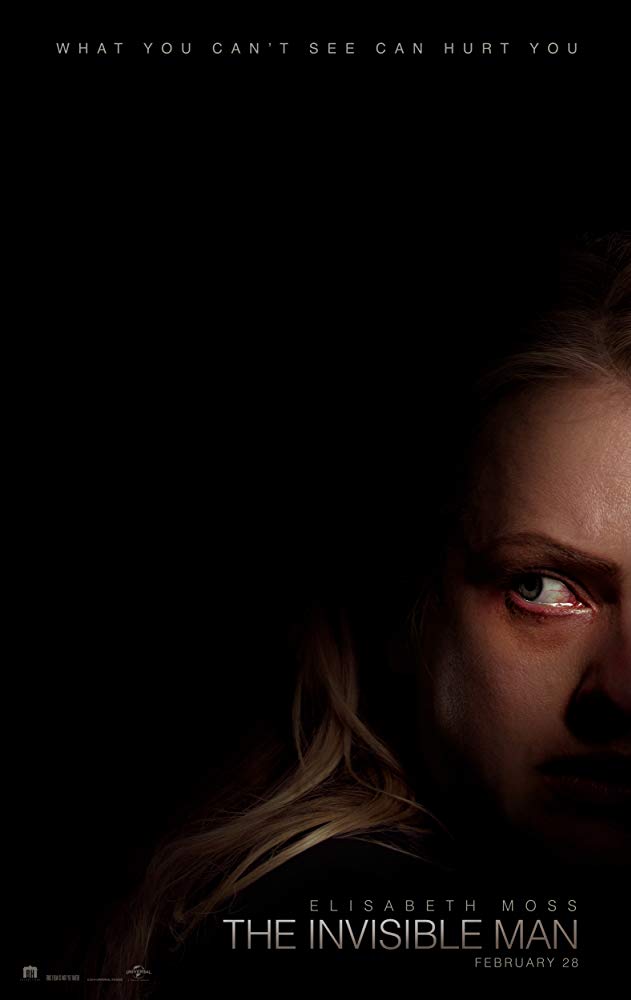by N. Renee Brown
Basically: A woman escapes her husband only to have something or someone threaten her new-found freedom.
Cecilia (Elisabeth Moss) is an abused wife who makes the bold move to escape her abusive husband Adrian (Oliver Jackson-Cohen). When she succeeds, Adrian commits suicide. Soon after strange things begin to occur. Something is stalking Cecilia but no one can see it.
I love the flipped narrative of this version of The Invisible Man, it is a great way to approach a classic story (originally a novel by H. G. Wells). I heartily approve. That doesn’t make this film perfect, it just means I’m appreciative of what they’ve done here. Just keep in mind this is more a thriller and less a horror movie.
Knowing the constraints of having an invisible bad guy, director Leigh Whannell was smart and used music and noise to make an impact. There were times I was cringing because of the cacophony, only to have it go completely silent—and that was so jarring and unsettling it made the following scenes even more intense.

Photo © 2020 Universal Pictures
The early use of empty frames was also a great concept. We all walked into the movie knowing there was going to be an invisible man (that IS the name of the movie) BUT to have the camera focus on an empty doorway for a beat or two longer than necessary upped the creepy factor and left me searching to see if anything moved.
The cast was amazing. Elisabeth Moss isn’t my cup of tea normally but she does an excellent job looking hollowed out. Even when she’s feeling happy and free, there is a brittle quality to her that makes you want to wrap her in a blanket. And the father-daughter relationship between James (Aldis Hodge) and Sydney (Storm Reid) is so very, very good that I almost want to see a movie about them alone. (Oh and I totally want to date Cecila’s sister Emily (Harriet Dyer) just so I can see her take down every person who tries to treat her like a dumb blonde.)
The Invisible Man wasn’t perfect, though. A couple of things really bothered me. Let’s get the stupid thing out of the way first…that damn dog. There is a dog in this movie (barely) but, if you are an animal lover like I am, you will try to follow its storyline…and it just doesn’t make sense. We go to Adrian’s empty house—where everything is draped for long-term storage—and yet there’s the dog. Who is feeding it? Letting it out? Where is it sleeping?

Photo © 2020 Universal Pictures
The second thing that bothered me was the time dilation. There was more than one instance where time seemed to compress to the point of being unbelievable. For instance, while Cecilia is in the shower, the phone begins to ring. All of a sudden she is out of the shower with a towel around her and casually goes to answer…in the space of four rings? I don’t think so. Later on, a member of the police appears in
less than a minute after an event. I mean, that’s some incredible response time if that’s true.
While that time dilation pulled me out of the movie more than once, I think it was because the beginning was so dragged out in contrast. By the time we see the first appearance of “The Invisible Man” I was edging toward ‘get on with it already!’ Knowing they were relying on tension, you would think Whannell would have been cutting this movie to the quick to make it as intense as possible. Yet somehow we flounder in the beginning.
In the End: The Invisible Man is a tense ride. I love the unique ways the director filmed vacant scenes and used noise. The story is mostly solid and leaves you on edge…but they didn’t need the dog.



